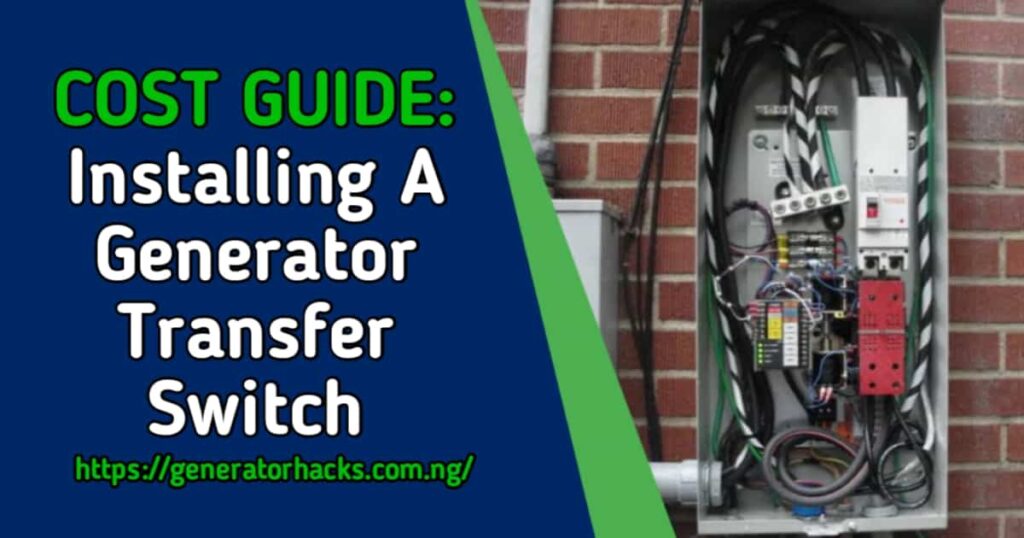As an Amazon Associate, we earn from qualifying purchases. This does not affect the price you pay or the quality of the products you buy. For more information, please read the full affiliate disclosure here.
Engine oil is one of the most vital components of your generator, as it lubricates, cools, and cleans the engine parts. Without proper oil level and quality, your generator can suffer from reduced performance, increased wear and tear, and even engine failure. That is why it is important to check the oil level and condition regularly and change it when necessary.
There was a time when one of our customers bought a new generator. To him, he never knows what engine oil he should use. Instead of researching and asking, he ends up using the wrong engine oil. Sorry to say, after an hour of working, the generator got damaged—we have to replace the engine.
But what if you’re already using the right oil and want to know how to check the oil level of your generator?
Should you do it when the engine is hot or cold?
What are the advantages and disadvantages of checking engine oil when it’s hot or cold? Are there any consequences if you check it when it’s cold or hot?
Henceforward, in this blog post, I will answer these questions and give you some tips on how to check the oil level of your generator correctly to avoid causing damage to your generator.
Checking the Oil Level When the Engine is Hot
Some people prefer to check the oil level when the engine is hot, as they believe that this gives them a more accurate reading of the actual oil level in the engine. My boss at Raf Tech Engineering Works subscribes to the solution of checking the engine oil when it’s hot. Even if there’s not much engine oil in the crankcase, he will still ask us to run the engine so we can get an accurate amount of engine oil in the generator engine. At least it runs for a couple of seconds to avoid the engine, bearings, and connecting rods getting worn out.
The logic behind this is that when the engine is hot, the oil expands and fills up more space in the oil pan. Therefore, while checking the oil level when the engine is hot, you will see a higher reading on the dipstick, which indicates that you have enough oil in your engine.
However, there are some drawbacks to checking the oil level when the engine is hot.
First of all, you need to be very careful not to burn yourself with the hot oil or engine parts. You should always wear gloves and use a rag to wipe off any excess oil from the dipstick. And not touching any other parts of the engine, such as the exhaust, etc.
Secondly, you need to wait for a few minutes after turning off the engine before checking the oil level. This is because some of the oil may still be circulating in the engine or stuck in the filter, and it takes some time for it to drain back into the oil pan. If you check the oil level too soon after turning off the engine, you may get a false low reading on the dipstick, which may prompt you to add more oil than necessary.
IMPORTANT READ:- FAQs: Is Generator Oil The Same As Car Oil?
Checking the Oil Level When the Engine is Cold
Just like checking your engine oil when your generator is hot, another option is to check the oil level when the engine is cold, which means that it has not been running for at least a few hours. The advantage of this method is that you do not have to worry about burning yourself with hot oil or engine parts, and you do not have to wait for any oil to drain back into the oil pan. You can simply pull out the dipstick and read the oil level right away.
However, checking the oil level when the engine is cold also has some disadvantages, just like the former.
First of all, you may not get a true reading of the actual oil level in the engine, as some of the oil may have contracted and settled at the bottom of the oil pan. Therefore, if you check the oil level when the engine is cold, you may see a lower reading on the dipstick, which may indicate that you need to add more oil to your engine even when it’s not needed.
Secondly, you may not be able to detect any signs of oil contamination or degradation, such as dark color, sludge, or metal particles. This is because these signs are more visible when the oil is hot and thin.
Which method should you choose?
So, which method should you choose to check the oil level of your generator? The answer depends on your personal preference and convenience. However, here are some general guidelines that may help you decide:
- Firstly, you may want to check the oil level before starting your generator; it is better to do it when the engine is cold. This way, you can ensure that your generator has enough oil before running it.
- Secondly, if you want to check the oil level after running your generator for a long time, then it is better to do it when the engine is hot. This way, you can monitor any changes in the oil quality and condition.
- Lastly, if you want to check the oil level periodically during the normal operation of your generator, then it does not matter whether you do it when the engine is hot or cold. However, you should always follow the same method consistently so that you can compare your readings accurately.
ALSO READ:- Does oil pressure increase with RPM? Find out the truth
Signs Your Oil Is Contaminated And Needs Changes
Earlier, I said if you don’t run the generator before checking the engine oil level, you won’t be able to know if the oil is contaminated or not. In that case, here are some common signs of oil contamination in a generator:
- Firstly, the blue smoke from the generator exhaust deeply indicates that oil is burning along with the fuel. Hence, you need to check the oil level or at least service and change the pistons and rings if they are worn out to avoid a shortage of oil.
- Secondly, you will notice gray or black smoke from the engine, which indicates that oil is leaking into the combustion chamber. This can be caused by leaking valve seals or bad pistons, as the case may be, because you can’t tell without the help of a professional after diagnosing the generator problems.
- Thirdly, you will notice oil stains on the engine and ground, which indicate that oil is leaking from places like the crankcase, seals, gaskets, or other parts.
- Thirdly, frequent low-oil shutdowns show that you need to be curious about your engine oil as it’s being consumed or lost at a high rate. Additionally, poor performance can also contribute to the oil not lubricating, cooling, or cleaning the engine properly.
- Lastly, dark colors, rotten smells, and milky colors are also signs that you should check out when intending to change the oil in your generator.
Therefore, if you notice any of these signs, you should change your oil as soon as possible and check for the source of the contamination. You should also use high-quality synthetic or semi-synthetic oil that meets or exceeds your generator’s specifications. By doing so, you can prevent potential damage and extend the lifespan of your generator.
How to Prevent Oil Contamination
You can prevent oil contamination, but in some cases, it’s unavoidable. Therefore, here are a few steps to prevent oil contamination:
- Firstly, make sure to use high-quality synthetic or semi-synthetic oil that meets or exceeds your generator’s specifications. This will help to reduce the risk of oil degradation, sludge formation, and microbial growth.
- Secondly, avoid introducing external contaminants with the oil, such as dirt, water, or coolant. Make sure to use a clean funnel and container when refilling the oil, and store the oil in a cool, dry place away from sunlight.
- Thirdly, use high-quality filtration to protect your generator during operation. Filters can help to remove any particles, water, or other contaminants that may enter the oil system. Replace the filters regularly according to the manufacturer’s instructions.
- Perform regular maintenance and inspection of your generator. Check for any signs of oil leakage, such as stains, smoke, or low oil shutdown. Fix any damaged or worn parts, such as seals, gaskets, hoses, or lines. Follow the recommended schedule for changing the oil and cleaning the engine.
- Perform system flushes when warranted to eradicate sludge and other deposits that may accumulate in the oil system. This will help to restore the oil flow and prevent clogging or corrosion. Use a suitable flushing agent and follow the proper procedure for flushing your generator.
By following these tips, you can prevent oil contamination in your generator and ensure its optimal performance and longevity. If you have any questions or need more information, please refer to the sources below or contact a professional generator service provider.
Tips on How to Check the Oil Level Correctly
Regardless of whether you choose to check your generator’s oil level when it is hot or cold, here are some tips on how to do it correctly:
- Always use a clean dipstick and wipe off any excess oil from it before inserting it into the oil filler hole.
- Always insert the dipstick fully into the hole, and then pull it out slowly and steadily.
- Always read both sides of the dipstick and take note of where the oil mark falls between the minimum and maximum indicators.
- Always check your owner’s manual for specific instructions on how often and how much oil to add or change for your generator model.
- Always use high-quality synthetic or semi-synthetic oil that meets or exceeds your generator’s specifications.
- Lastly, always dispose of used oil properly according to local regulations.
Final Thought
Checking your generator’s oil level is an essential part of maintaining your generator and ensuring its optimal performance and longevity. However, you need to be aware of the pros and cons of checking the oil level when the engine is hot or cold and choose the method that suits your needs and preferences. You also need to follow some basic tips on how to check the oil level correctly and safely. By doing so, you can keep your generator running smoothly and efficiently for years to come.
Stay Connected with Us!
Follow us on Facebook and Twitter for the latest updates on staying safe online. Don't forget to subscribe for more tips directly in your inbox!
Follow on Facebook Follow on X Follow on Pinterest Join Our Private Facebook Group

